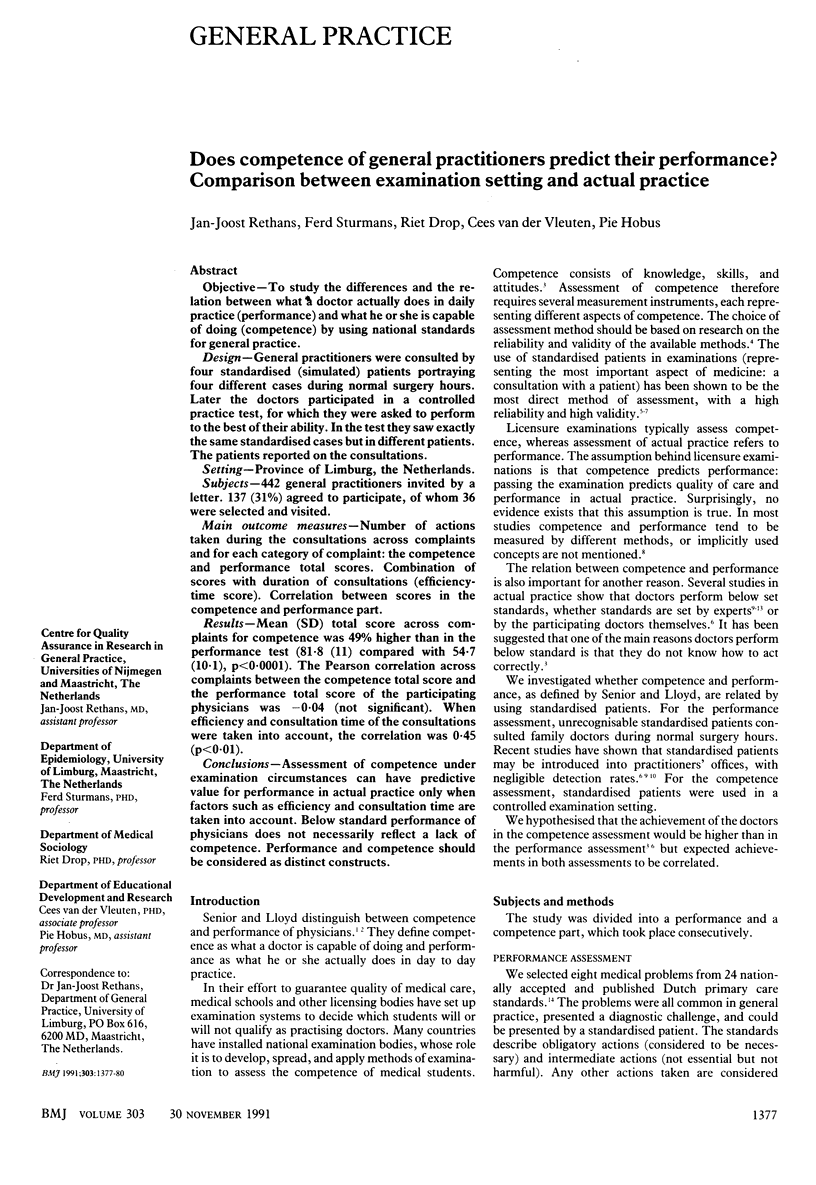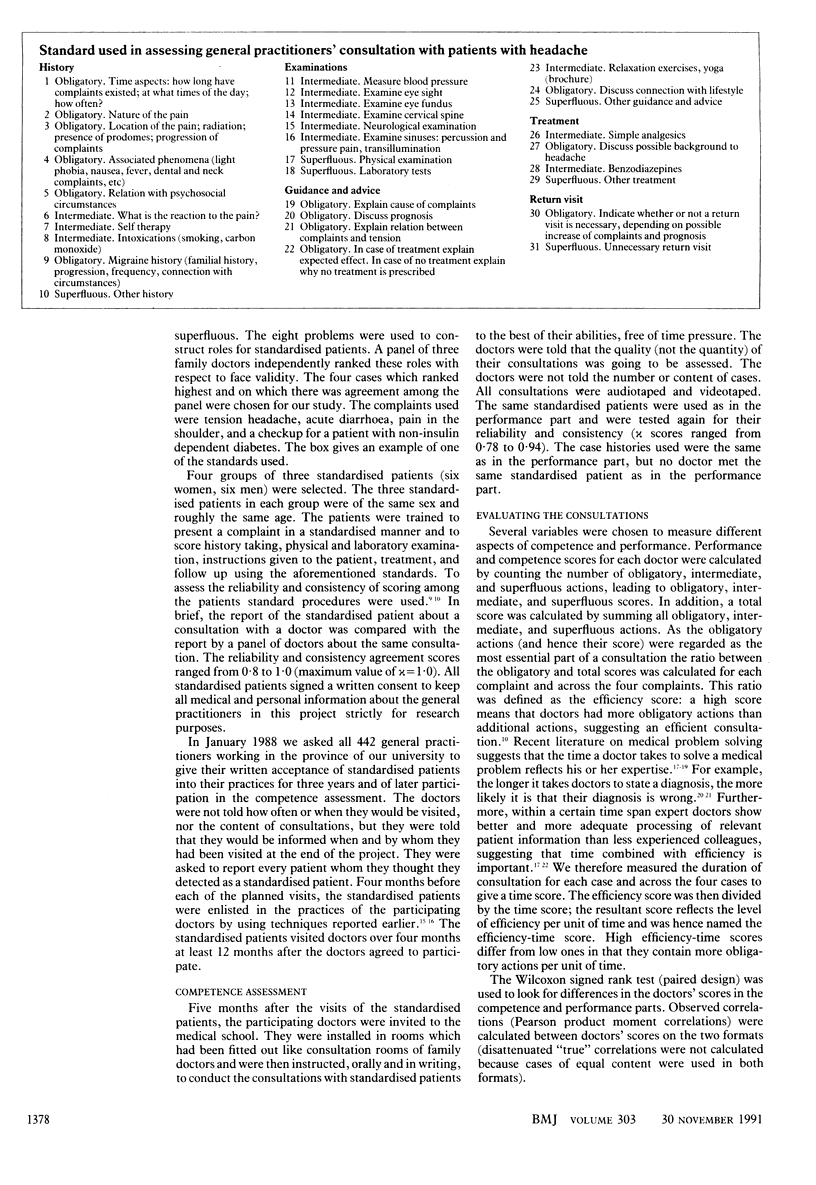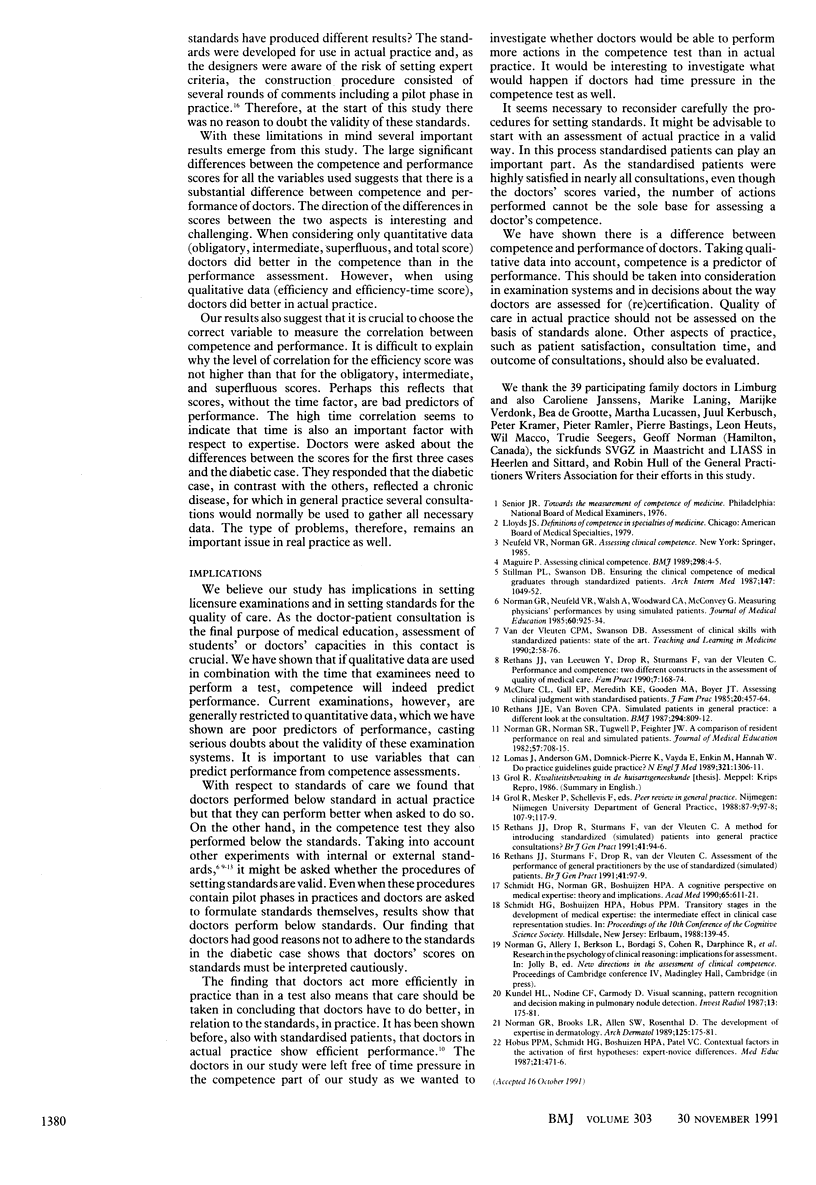Abstract
OBJECTIVE--To study the differences and the relation between what a doctor actually does in daily practice (performance) and what he or she is capable of doing (competence) by using national standards for general practice. DESIGN--General practitioners were consulted by four standardised (simulated) patients portraying four different cases during normal surgery hours. Later the doctors participated in a controlled practice test, for which they were asked to perform to the best of their ability. In the test they saw exactly the same standardised cases but in different patients. The patients reported on the consultations. SETTING--Province of Limburg, the Netherlands. SUBJECTS--442 general practitioners invited by a letter. 137 (31%) agreed to participate, of whom 36 were selected and visited. MAIN OUTCOME MEASURES--Number of actions taken during the consultations across complaints and for each category of complaint: the competence and performance total scores. Combination of scores with duration of consultations (efficiency-time score). Correlation between scores in the competence and performance part. RESULTS--Mean (SD) total score across complaints for competence was 49% higher than in the performance test (81.8 (11) compared with 54.7 (10.1), p less than 0.0001). The Pearson correlation across complaints between the competence total score and the performance total score of the participating physicians was -0.04 (not significant). When efficiency and consultation time of the consultations were taken into account, the correlation was 0.45 (p less than 0.01). CONCLUSIONS--Assessment of competence under examination circumstances can have predictive value for performance in actual practice only when factors such as efficiency and consultation time are taken into account. Below standard performance of physicians does not necessarily reflect a lack of competence. Performance and competence should be considered as distinct constructs.
Full text
PDF



Selected References
These references are in PubMed. This may not be the complete list of references from this article.
- Hobus P. P., Schmidt H. G., Boshuizen H. P., Patel V. L. Contextual factors in the activation of first diagnostic hypotheses: expert-novice differences. Med Educ. 1987 Nov;21(6):471–476. doi: 10.1111/j.1365-2923.1987.tb01405.x. [DOI] [PubMed] [Google Scholar]
- Kundel H. L., Nodine C. F., Carmody D. Visual scanning, pattern recognition and decision-making in pulmonary nodule detection. Invest Radiol. 1978 May-Jun;13(3):175–181. doi: 10.1097/00004424-197805000-00001. [DOI] [PubMed] [Google Scholar]
- Lomas J., Anderson G. M., Domnick-Pierre K., Vayda E., Enkin M. W., Hannah W. J. Do practice guidelines guide practice? The effect of a consensus statement on the practice of physicians. N Engl J Med. 1989 Nov 9;321(19):1306–1311. doi: 10.1056/NEJM198911093211906. [DOI] [PubMed] [Google Scholar]
- Maguire P. Assessing clinical competence. BMJ. 1989 Jan 7;298(6665):4–5. doi: 10.1136/bmj.298.6665.4. [DOI] [PMC free article] [PubMed] [Google Scholar]
- McClure C. L., Gall E. P., Meredith K. E., Gooden M. A., Boyer J. T. Assessing clinical judgment with standardized patients. J Fam Pract. 1985 May;20(5):457–464. [PubMed] [Google Scholar]
- Norman G. R., Neufeld V. R., Walsh A., Woodward C. A., McConvey G. A. Measuring physicians' performances by using simulated patients. J Med Educ. 1985 Dec;60(12):925–934. doi: 10.1097/00001888-198512000-00004. [DOI] [PubMed] [Google Scholar]
- Norman G. R., Tugwell P., Feightner J. W. A comparison of resident performance on real and simulated patients. J Med Educ. 1982 Sep;57(9):708–715. doi: 10.1097/00001888-198209000-00008. [DOI] [PubMed] [Google Scholar]
- Rethans J. J., Drop R., Sturmans F., van der Vleuten C. A method for introducing standardized (simulated) patients into general practice consultations. Br J Gen Pract. 1991 Mar;41(344):94–96. [PMC free article] [PubMed] [Google Scholar]
- Rethans J. J., van Boven C. P. Simulated patients in general practice: a different look at the consultation. Br Med J (Clin Res Ed) 1987 Mar 28;294(6575):809–812. doi: 10.1136/bmj.294.6575.809. [DOI] [PMC free article] [PubMed] [Google Scholar]
- Rethans J. J., van Leeuwen Y., Drop R., van der Vleuten C., Sturmans F. Competence and performance: two different concepts in the assessment of quality of medical care. Fam Pract. 1990 Sep;7(3):168–174. doi: 10.1093/fampra/7.3.168. [DOI] [PubMed] [Google Scholar]
- Schmidt H. G., Norman G. R., Boshuizen H. P. A cognitive perspective on medical expertise: theory and implication. Acad Med. 1990 Oct;65(10):611–621. doi: 10.1097/00001888-199010000-00001. [DOI] [PubMed] [Google Scholar]
- Stillman P. L., Swanson D. B. Ensuring the clinical competence of medical school graduates through standardized patients. Arch Intern Med. 1987 Jun;147(6):1049–1052. [PubMed] [Google Scholar]


